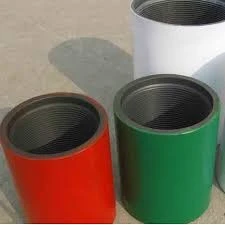- Afrikaans
- Albanian
- Amharic
- Arabic
- Armenian
- Azerbaijani
- Basque
- Belarusian
- Bengali
- Bosnian
- Bulgarian
- Catalan
- Cebuano
- Corsican
- Croatian
- Czech
- Danish
- Dutch
- English
- Esperanto
- Estonian
- Finnish
- French
- Frisian
- Galician
- Georgian
- German
- Greek
- Gujarati
- Haitian Creole
- hausa
- hawaiian
- Hebrew
- Hindi
- Miao
- Hungarian
- Icelandic
- igbo
- Indonesian
- irish
- Italian
- Japanese
- Javanese
- Kannada
- kazakh
- Khmer
- Rwandese
- Korean
- Kurdish
- Kyrgyz
- Lao
- Latin
- Latvian
- Lithuanian
- Luxembourgish
- Macedonian
- Malgashi
- Malay
- Malayalam
- Maltese
- Maori
- Marathi
- Mongolian
- Myanmar
- Nepali
- Norwegian
- Norwegian
- Occitan
- Pashto
- Persian
- Polish
- Portuguese
- Punjabi
- Romanian
- Russian
- Samoan
- Scottish Gaelic
- Serbian
- Sesotho
- Shona
- Sindhi
- Sinhala
- Slovak
- Slovenian
- Somali
- Spanish
- Sundanese
- Swahili
- Swedish
- Tagalog
- Tajik
- Tamil
- Tatar
- Telugu
- Thai
- Turkish
- Turkmen
- Ukrainian
- Urdu
- Uighur
- Uzbek
- Vietnamese
- Welsh
- Bantu
- Yiddish
- Yoruba
- Zulu
aluminum pipe couplings and fittings
Aluminum Pipe Couplings and Fittings A Comprehensive Overview
Aluminum pipe couplings and fittings play a crucial role in various industrial, commercial, and residential applications. Known for their lightweight, strength, and corrosion resistance, aluminum fittings are increasingly preferred over traditional materials like steel or plastic. This article delves into the attributes, types, installation techniques, and benefits of aluminum fittings and couplings.
What Are Aluminum Pipe Couplings and Fittings?
Aluminum pipe couplings are devices used to connect two or more sections of aluminum pipes, enabling the flow of fluids or gases. They come in various forms, including straight couplings, elbows, tees, and reducers. Each type serves a specific purpose, depending on the application requirements. Fittings, on the other hand, are used to close, terminate, or change the direction of a pipeline, making them essential for creating dependable and efficient piping systems.
Advantages of Aluminum Fittings
1. Lightweight Nature One of the most significant benefits of aluminum fittings is their lightweight properties. This characteristic makes handling and transportation easier, leading to lower labor costs and reduced structural support requirements. 2. Corrosion Resistance Aluminum naturally forms a protective oxide layer when exposed to air, making it highly resistant to corrosion. This feature is particularly beneficial in environments where oxidation could compromise the integrity of the piping system, such as in marine or chemical applications.
3. High Strength-to-Weight Ratio Despite being lightweight, aluminum fittings can withstand considerable pressure and stress, which is especially vital in high-pressure applications.
4. Versatility Aluminum fittings are available in various sizes and configurations, making them suitable for a wide range of industries, including HVAC, plumbing, automotive, and aerospace.
5. Cost-Effectiveness While the initial cost of aluminum fittings may be higher than some alternatives, their durability and low maintenance requirements can lead to long-term savings, making them a cost-effective solution.
aluminum pipe couplings and fittings

Types of Aluminum Couplings and Fittings
Aluminum fittings come in a myriad of designs
- Straight Couplings Used to connect straight sections of pipe. - Elbows Allow for directional changes, available in common angles like 90 and 45 degrees. - Tees Enable branching off in multiple directions. - Reducers Facilitate transitions between different pipe diameters.
Installation Techniques
Installation of aluminum couplings and fittings typically involves using either threaded, welded, or flanged connections.
- Threaded Connections Involves screwing the pipes into the fittings, providing a secure and easy-to-disassemble option. - Welding Offers a permanent connection that can withstand extreme conditions, often used in high-pressure applications. - Flanged Connections Involve bolting the fittings to the pipes, which allows for easy removal and inspection.
Conclusion
In summary, aluminum pipe couplings and fittings are indispensable components in modern plumbing and piping systems. With their lightweight nature, corrosion resistance, and versatility, they are suitable for a wide array of applications. By understanding the types available and their respective installation methods, professionals can ensure the creation of reliable and efficient systems that stand the test of time. Whether for industrial projects or home improvement tasks, opting for aluminum fittings is a decision that balances quality, performance, and cost-effectiveness.
-
Well Casing Extension Couplings – Applications and InstallationNewsJun.06,2025
-
Types of Crossover Subs in Drilling & CompletionNewsJun.06,2025
-
Key Features of High-Quality Tubing Pup JointsNewsJun.06,2025
-
Installation and Maintenance Tips for Steel Couplings for PipeNewsJun.06,2025
-
How to Select the Right Pup Joint for Oil & Gas OperationsNewsJun.06,2025
-
Applications of Stainless Steel Pipe CouplingsNewsJun.06,2025







